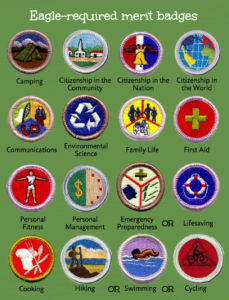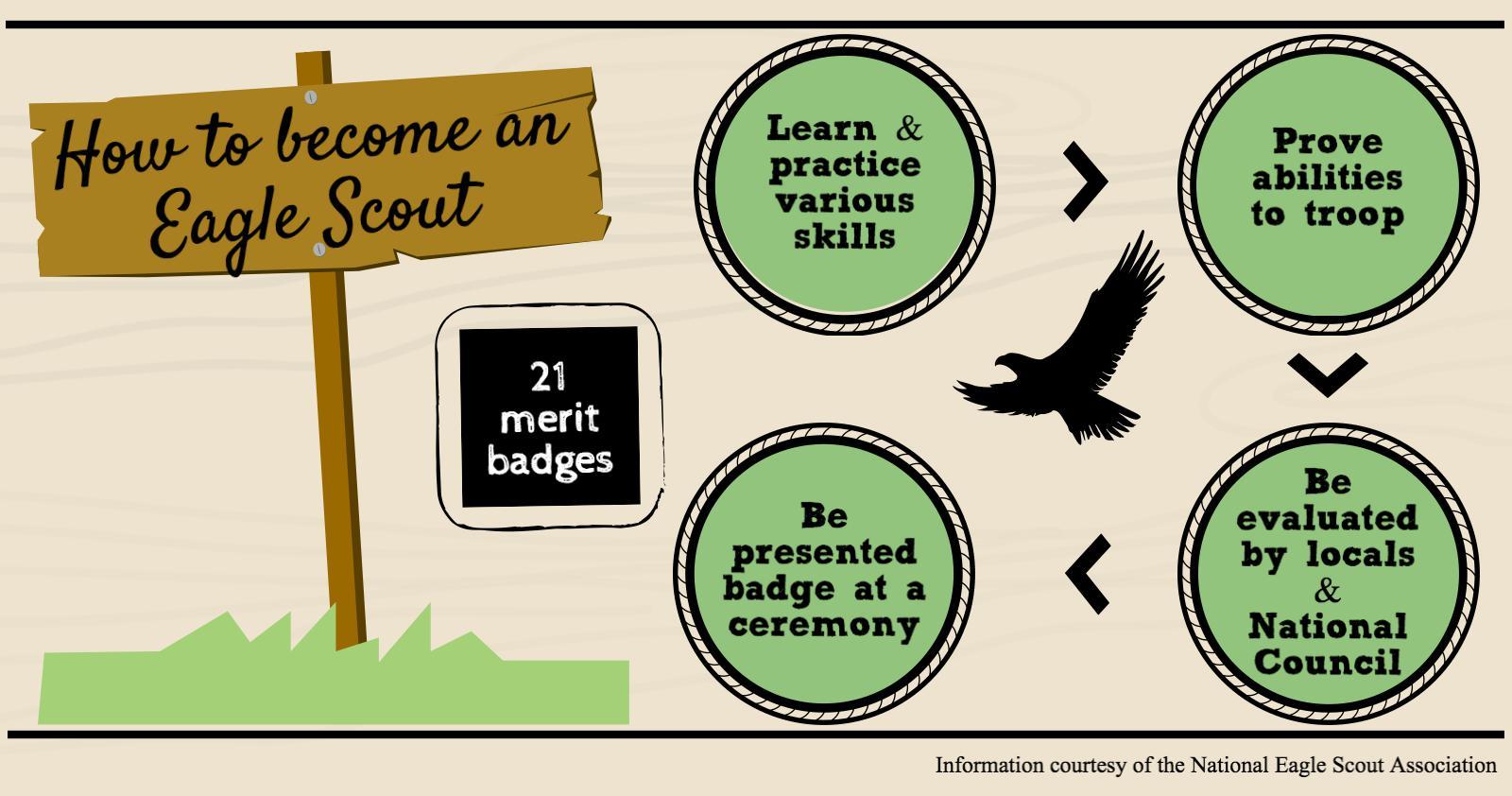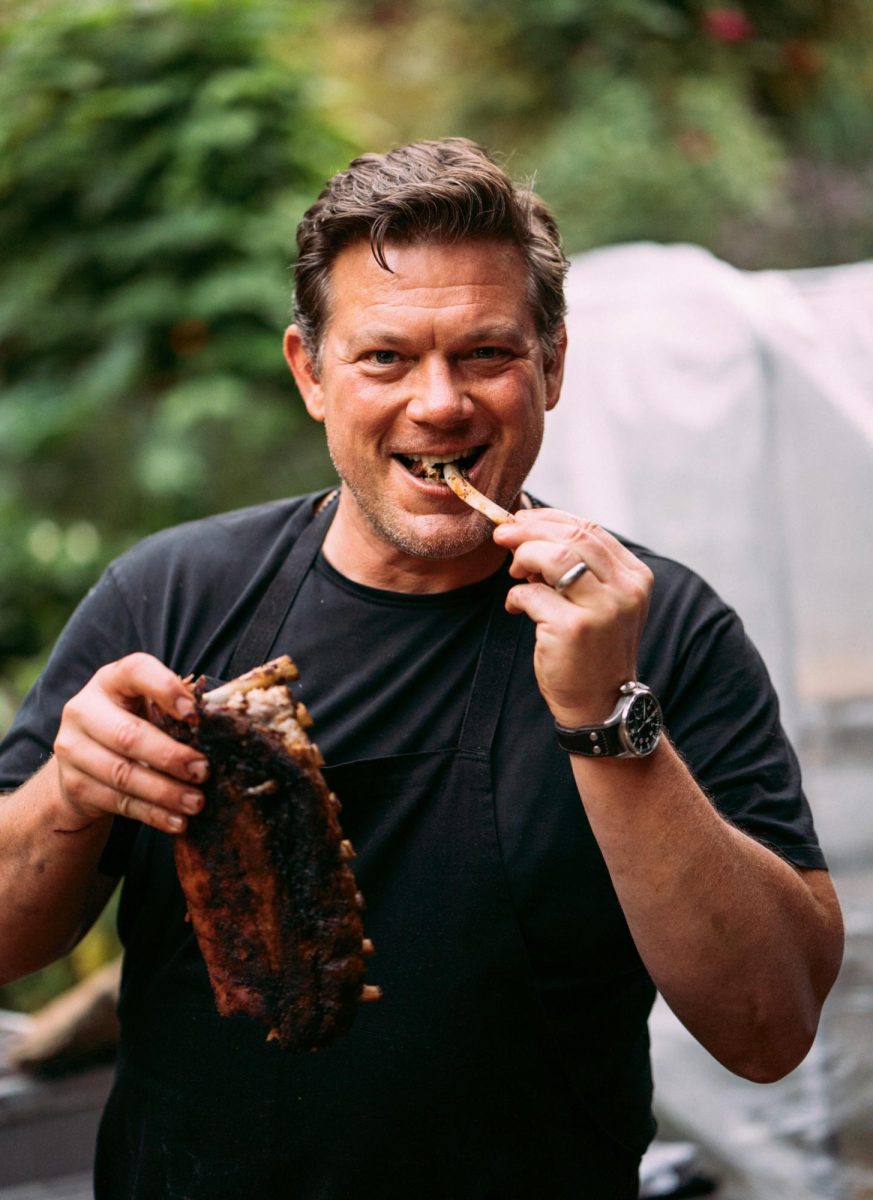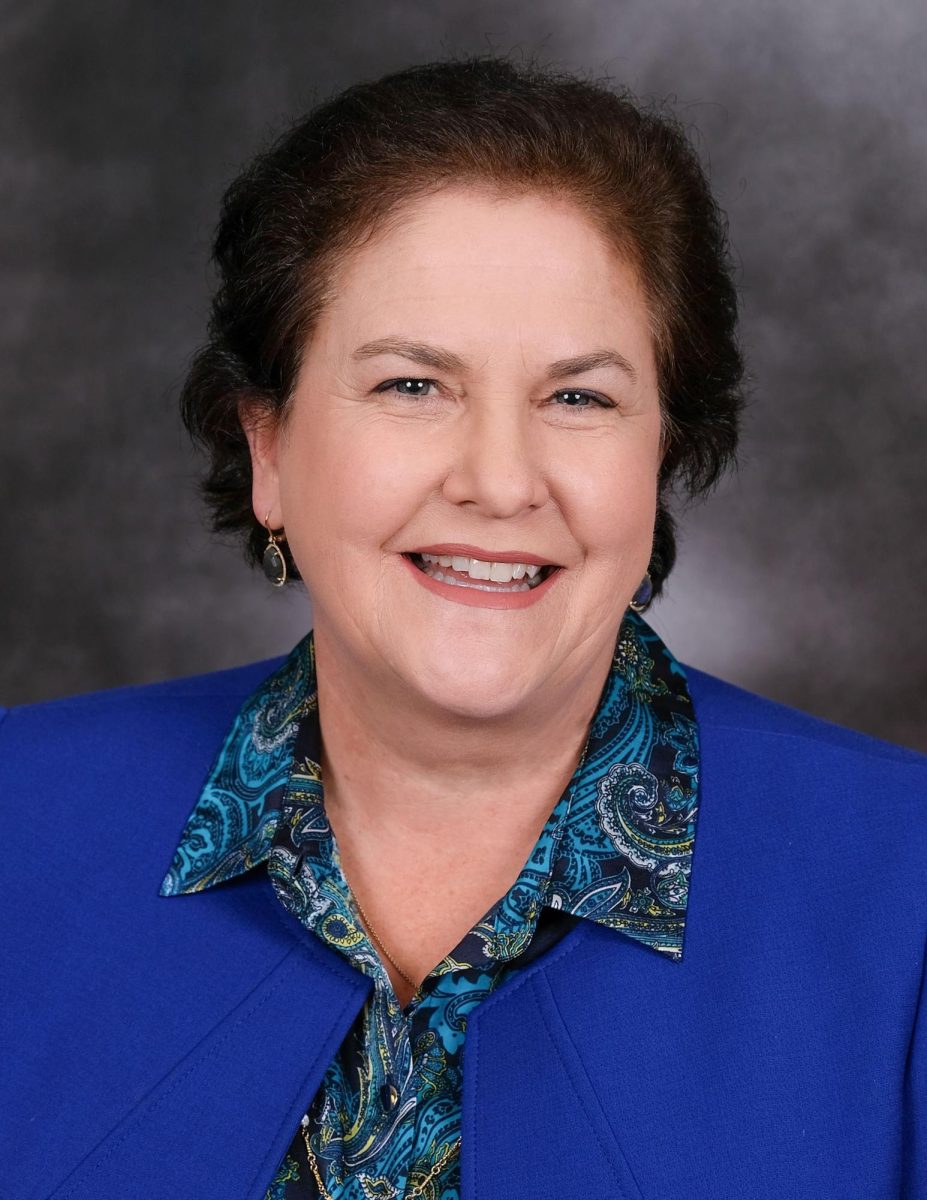From Cub to Eagle: A Boy Scout’s journey
By Christine Watridge
The young boys, clad in their navy blue uniforms, meet on a Saturday afternoon. The local “pack” consists of about 30 Scouts from first to fifth grade. Cub Scouts and their families begin a round of “Ants Go Marching,” and the cheerful singing fills the local park.

Over 43 thousand packs meet regularly like this across the country, with a total of about one and a half million Cub Scouts nationwide. But fast forward six years, and the numbers have dwindled. The transition from Cub Scout to Boy Scout isn’t always easy. As middle school rolls around, many drop out of the program. Sports, school and other extracurriculars take priority.
By high school, there are just a few who are still on track to becoming Eagle Scouts. The journey to becoming an Eagle Scout, the highest rank in Boy Scouts, is time-consuming and challenging, but some scouts stick with it, and reap the rewards.
Although the number of Eagle Scouts has been steadily rising since the creation of the Eagle award, only about five percent of all Boy Scouts achieve Eagle Scout rank nowadays, according to the National Eagle Scout Association (NESA).

According to the Boy Scouts of America (BSA), “the mission of the Boy Scouts of America is to prepare young people to make ethical and moral choices over their lifetimes by instilling in them the values of the Scout Oath and Scout Law.”
The Eagle Scout rank is similar in prestige to the Gold Award of Girl Scouts, where high school girls create a project to help solve a problem in the community. Both the Gold Award and the Eagle Scout rank are performance-based.
“Some people think it’s just this thing to get all these badges and ranks and be an Eagle Scout because it looks good for college. I don’t think that’s the main point of it. It’s this journey of the stuff you learn along the way,” said Mike Kelemen, a social studies teacher and long-time parent volunteer for the Boy Scouts. “If you look from the training I’ve done and what Boy Scouts is supposed to be, it’s a youth development organization.”
The process to becoming an Eagle Scout has four steps. First, the scout must learn and practice various activities, including camping, cooking and first aid. To acquire the different badges, the scout then needs to prove his abilities to the troop by being tested on these skills.
By achieving these skills, a Boy Scout can move up through the ranks—Scout rank, Tenderfoot, Second Class, First Class, Star, Life, and Eagle. At each rank advancement, the scout participates in a Scoutmaster Conference, where the scoutmaster aids the scout in setting new goals and discusses whether the scout achieved his present goals.
An aspiring Eagle Scout also has to do a big community project in order to be eligible. Current Eagle Scout Wyatt Barker repaired the bleachers of the baseball field at Bacich Elementary School in Kentfield for his project.
After the scout gets his required badges and finished his community project, he is evaluated by the district, the local council and finally the National Council. The reviewers look at the scout’s attitude, skills and whether they meet the standards to qualify for rank advancement. If the scout is approved to advance to Eagle rank, they are recognized at a ceremony in front of the troop and presented the badge.
There are 13 required merit badges that a scout must acquire to become an Eagle Scout, as well as eight other badges, which can be chosen out of more than 130 available badges.
Barker said that the hardest badges to get for him were three called Citizenship in the Community, Citizenship in the Nation and Citizenship in the World.
“[The badges] really go in depth about what it means to be part of your community,” Barker said. “For that, you have to do some community meetings or something and sit in and then write reports about it, like what you thought and something that you would change. And then there’s the same thing for the nation and the world, too.”
The BSA was founded in 1910 but the rank of Eagle Scout became official in 1927, when it was switched from a special award to a real rank.
About two million scouts have earned the title since 1912, and now more than 50,000 boys earn the award each year, according to NESA.
Kelemen said that Boy Scouts is a way to try and teach qualities and ideals to young boys in a more relaxed and enjoyable context.
“A lot of it seems a little cheesy, but it’s actually really good if you think about it. You have a duty to yourself to be an ethical person, you have a duty to your community to help other people, and you have a duty to your country to appreciate what you have,” Kelemen said. “Most of these kids don’t want to sign up to be good people, so you try to teach those things in the context of doing stuff that’s fun.”
“You have a duty to yourself to be an ethical person, you have a duty to your community to help other people, and you have a duty to your country to appreciate what you have.”
This is what kept Barker and junior Tommy Young interested in the program. Both enjoyed the outdoor aspect of Boy Scouts, as well as the opportunities to go on different outings.
“I had the privilege of going to the National Jamboree in 2013 in West Virginia, and this last summer I went backpacking in New Mexico for two weeks, which was a really great experience. It’s things like that made me stick with [Boy Scouts],” Young said.
Barker has been with Boy Scouts since elementary school and decided to go all the way through the program. He almost quit after fifth grade, when he moved from Cub Scouts to Boy Scouts and joined a new troop where he didn’t know anyone.

Both Young and Barker received their Eagle Scout badges relatively early. The deadline for becoming an Eagle Scout is 18 years old, but Barker achieved Eagle Scout rank the summer before his freshman year of high school when he was just 14 years old.
One of the most difficult parts of the process for Young, who became an Eagle Scout at 16 years old, was figuring out what to do after receiving the Eagle badge.
“I didn’t really know what to do, because for a while I’d be like ‘Oh, I’ve got to get Eagle, that’s what I’m doing,’ and then after that, ‘What am I supposed to do now?’ I’ve been with my troop, just watching, giving advice,” Young said.
According to Barker, becoming an Eagle Scout isn’t the end of the road.
“That’s kind of the pinnacle of scouting, the Eagle Scout, but it’s not over after that. You’d like to think that you’re done, but it can get even harder after you become an Eagle Scout because you’re being held to a higher standard,” Barker said. “You’re expected to help everyone, run meetings and stuff like that, which is something different.”

















